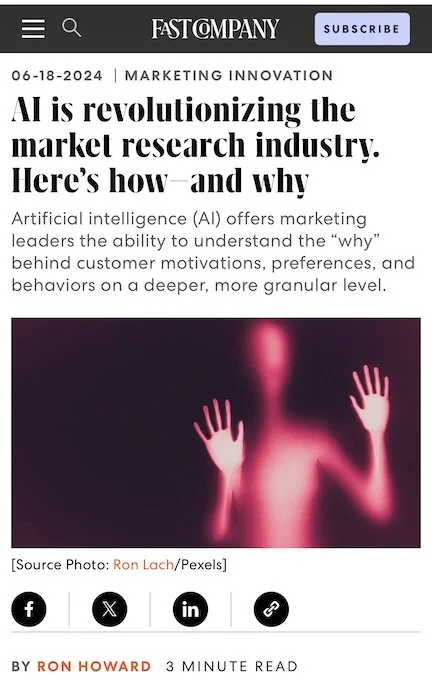Is AI revolutionizing qualitative market research?
Lately, we're hearing that AI tools can "mine insights" from vast libraries of qualitative recordings. Or help teams conduct qual research "at scale.”
Here’s the problem with these claims: qualitative research discussions are subjective and conversational. They are human.
We all know that human conversation / communication is mostly non-verbal -- expressions, volume, tone, body language, gestures, breathing, etc.
On top of that, human conversation also uses sarcasm. And subtext. And humor. And pauses --or even silence.
These are routine conversational details. And none of them are captured in a market research transcript.
And that's the main reason why today's AI analysis of qualitative research is inherently flawed. It only looks at transcripts. So it doesn't get the whole story.
But, you ask, couldn't AI-powered software read emotions from video recordings of conversations?
Affectiva was founded in 2009, with a mission to read human emotions captured on video. I was rooting for them to be successful in that mission. But in 12 years, the company never launched a product that reliably read emotions / sentiment of people *in conversation*. It was acquired by Smart Eye in 2021, which seems primarily focused on automotive driver monitoring systems (eye tracking).
At some point, some day, AI will be paired with hardware/sensors so that it can read nonverbals, more accurately than humans. Perhaps androids will also be as emotionally intelligent and expressive as humans (like those in HBO's Westworld). When that happens, teams of androids will no doubt be conducting qualitative research and writing insightful reports. Instantly.
But in the real world of today, AI-driven transcript analysis of human conversations cannot --and should not-- revolutionize qualitative market research, as this Fast Company article suggests.
hashtag#marketresearch, hashtag#datasynthesis, hashtag#AI, hashtag#researchreports, hashtag#qualitativeresearch, hashtag#transcripts, hashtag#nonverbalcommunication

